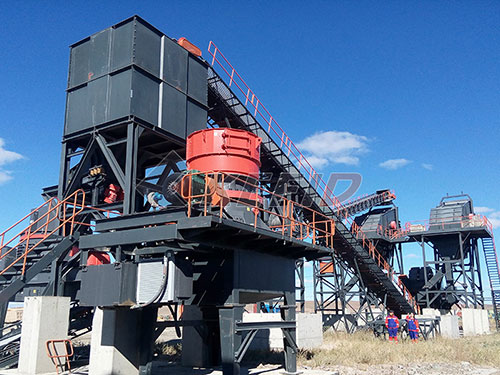Gyratory vs. Cone Crusher: Choosing the Right Tool for Size Reduction

In the demanding world of mineral processing and aggregate production, primary and secondary crushing stages are fundamental. Two dominant workhorses in this arena are the gyratory crusher and the cone crusher. While both leverage compressive force to break rock, their design philosophies, operational characteristics, and ideal applications diverge significantly. Understanding these differences is crucial for selecting the optimal machine for a specific crushing circuit.
Core Distinction: Design Philosophy
Gyratory Crusher: Think heavy-duty foundation work. This machine is characterized by its massive size and robust construction. The heart of its operation is a fixed outer concave (bowl liner) and a central gyrating spindle covered by a mantle. The spindle is suspended from the top of the machine via a “spider,” allowing its bottom end to gyrate eccentrically within the concave chamber.
Design Feature: Top-Supported Spindle.

Feed Opening: Typically very large, resembling an inverted cone, enabling it to handle massive feed directly from haul trucks (>1500mm common).
Output: Generally produces a relatively coarse product in primary crushing applications.
Cone Crusher: Engineered for flexibility and efficiency in secondary, tertiary, and quaternary stages. It also consists of a concave (bowl liner) and a mantle on a central shaft (head). Crucially, the entire head assembly gyrates eccentrically within the bowl.
Design Feature: Bottom-Supported Head/Shaft (resting on an eccentric bushing).
Feed Opening: Smaller than gyratories, requiring more controlled feed (often pre-crushed material) via conveyors or feeders.
Output: Capable of producing finer products due to finer crushing chambers and adjustable settings.
Operational Characteristics & Performance
1. Capacity & Feed Size:
Gyratory: Unmatched in raw throughput capacity (>10,000 TPH possible) and ability to accept enormous feed sizes directly from mining operations. Ideal for high-capacity primary crushing stations.
Cone Crusher: Lower maximum throughput capacity compared to large gyratories (though high-capacity models exist). Designed for smaller feed sizes typical of secondary/tertiary stages (<250mm often). Excels at producing consistent, finer product gradations.
2. Product Shape &

Leave a Reply